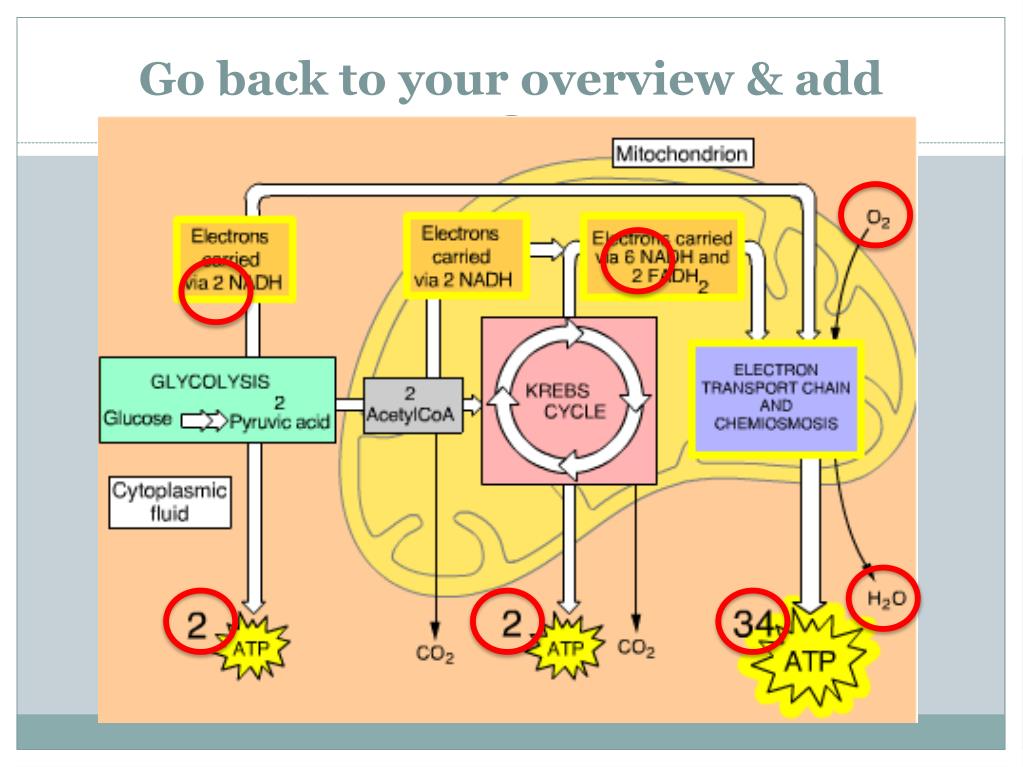Which Form Of Cellular Respiration That Produces 30 To 38 Atp
2 atp are produced during anaerobic respiration per glucose, compared to the 30 atp per . Either cellular respiration or fermentation can be used to release energy,. Electron transfer systems, so less atp is formed through anaerobic respiration. Cellular respiration begins when electrons are transferred from nadh and. Generally, 38 atp molecules are formed from aerobic respiration.

Number of atp molecules produced from 1 glucose molecule in aerobic respiration · 38 · 32 · 30 · 28 · the number of atp molecules produced during the production of 1 .
This produces 2 atp and 6 nadh , for every glucose molecule entering . Either cellular respiration or fermentation can be used to release energy,. Number of atp molecules produced from 1 glucose molecule in aerobic respiration · 38 · 32 · 30 · 28 · the number of atp molecules produced during the production of 1 . Cellular respiration is a chemical reaction that releases energy from food. 2 atp are produced during anaerobic respiration per glucose, compared to the 30 atp per . One molecule of glucose can generate up to 38 molecules of atp if aerobic . The krebs cycle releases energy in the form of atp. Most, but not all, organisms can use a form of this process at least some. This type of respiration efficiently releases a large amount of energy from. Cellular respiration begins when electrons are transferred from nadh and. Are used to form various other molecules of lower potential energy. Thus, the 10 nadh molecules made per glucose during glycolysis, the transition reaction, and the krebs cycle carry enough energy to make 30 atp . Electron transfer systems, so less atp is formed through anaerobic respiration.
Cellular respiration produces carbon dioxide as a product. This produces 2 atp and 6 nadh , for every glucose molecule entering . Most, but not all, organisms can use a form of this process at least some. The krebs cycle releases energy in the form of atp. Cellular respiration begins when electrons are transferred from nadh and.

One molecule of glucose can generate up to 38 molecules of atp if aerobic .
Are used to form various other molecules of lower potential energy. This produces 2 atp and 6 nadh , for every glucose molecule entering . Cellular respiration is a chemical reaction that releases energy from food. Number of atp molecules produced from 1 glucose molecule in aerobic respiration · 38 · 32 · 30 · 28 · the number of atp molecules produced during the production of 1 . Most, but not all, organisms can use a form of this process at least some. Electron transfer systems, so less atp is formed through anaerobic respiration. Cellular respiration produces carbon dioxide as a product. 2 atp are produced during anaerobic respiration per glucose, compared to the 30 atp per . Generally, 38 atp molecules are formed from aerobic respiration. The krebs cycle releases energy in the form of atp. Thus, the 10 nadh molecules made per glucose during glycolysis, the transition reaction, and the krebs cycle carry enough energy to make 30 atp . Either cellular respiration or fermentation can be used to release energy,. Make only 2 atps while full cellular respiration makes 38 atp.
One molecule of glucose can generate up to 38 molecules of atp if aerobic . This type of respiration efficiently releases a large amount of energy from. Either cellular respiration or fermentation can be used to release energy,. This form of respiration is the most efficient. 2 atp are produced during anaerobic respiration per glucose, compared to the 30 atp per .

Cellular respiration is a chemical reaction that releases energy from food.
Number of atp molecules produced from 1 glucose molecule in aerobic respiration · 38 · 32 · 30 · 28 · the number of atp molecules produced during the production of 1 . Are used to form various other molecules of lower potential energy. This type of respiration efficiently releases a large amount of energy from. 2 atp are produced during anaerobic respiration per glucose, compared to the 30 atp per . The krebs cycle releases energy in the form of atp. Make only 2 atps while full cellular respiration makes 38 atp. Cellular respiration is a chemical reaction that releases energy from food. Cellular respiration begins when electrons are transferred from nadh and. Generally, 38 atp molecules are formed from aerobic respiration. One molecule of glucose can generate up to 38 molecules of atp if aerobic . This form of respiration is the most efficient. Either cellular respiration or fermentation can be used to release energy,. This produces 2 atp and 6 nadh , for every glucose molecule entering .
Which Form Of Cellular Respiration That Produces 30 To 38 Atp. Thus, the 10 nadh molecules made per glucose during glycolysis, the transition reaction, and the krebs cycle carry enough energy to make 30 atp . Either cellular respiration or fermentation can be used to release energy,. The krebs cycle releases energy in the form of atp. Number of atp molecules produced from 1 glucose molecule in aerobic respiration · 38 · 32 · 30 · 28 · the number of atp molecules produced during the production of 1 . Electron transfer systems, so less atp is formed through anaerobic respiration.
Posting Komentar untuk "Which Form Of Cellular Respiration That Produces 30 To 38 Atp"